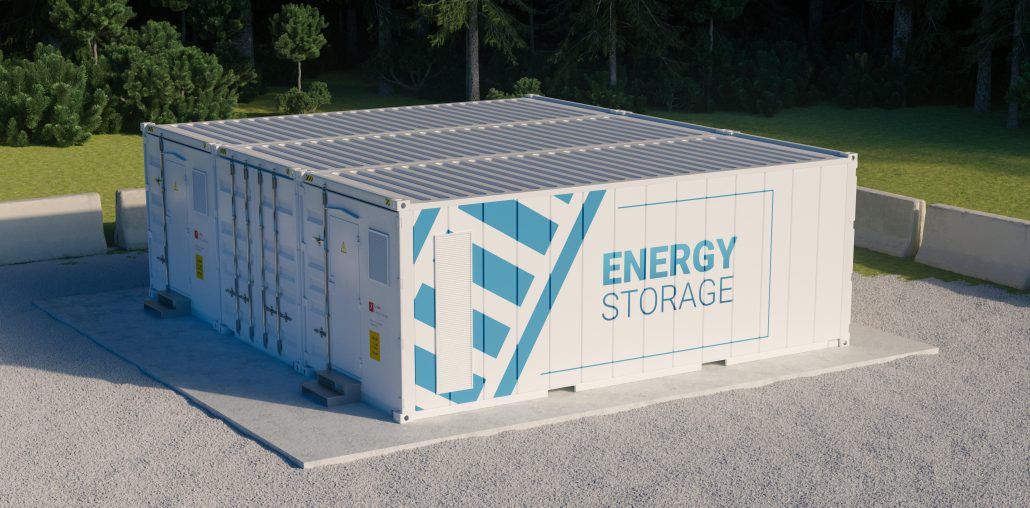Brandschutz für stationäre Energiespeicheranlagen
Im Mai 2022 wurden 1:1-Brandversuche zum Brandschutz für stationäre Energiespeicheranlagen (engl.: Energy Storage Systems, ESS) durchgeführt. Der Versuchsaufbau orientierte sich am realen Anwendungsfall und nutzte einen 20′-Überseecontainer.
Zur Absicherung von stationären Energiespeicheranlagen wurden im Rahmen der Versuche wasser- sowie gasbasierte Löschmedien untersucht. Ferner wurden verschiedene Brandmeldesysteme getestet, die auf unterschiedlichen Brandkenngrößen beruhen: Rauch, Temperatur und spezifische Gase.
Die Brandlast bestand aus Lithium-Ionen-Batterien mit prismatischen Zellen. Dabei wiesen die Module im Zündeinschub einen für Energiespeicheranlagen repräsentativen Energieinhalt auf. Um die Brandausbreitung bewerten zu können, befanden sich Zielbrandlasten in den umliegenden Einschüben. Die übrigen Einschübe wurden mit Leergehäusen bestückt.
Darüber hinaus wurden zur anschließenden Bewertung der Versuche weitere Messdaten erfasst. Dazu gehörten in erster Linie Temperaturmessstellen an kritischen Positionen, um Rückschlüsse auf die Brandeindämmung ziehen zu können. Ebenso wurden die emittierten Gase mittels eines Fourier-Transform-Infrarotspektrometers (FTIR) überwacht. Weiterhin kamen optische sowie Infrarot-Kameras zum Einsatz.
Ein Brandversuch, in dem Hochdruck-Wassernebel zur Brandbekämpfung zum Einsatz kam, wurde vom TÜV begleitet und als erfolgreich bewertet. Auf Basis der gewonnenen Erkenntnisse wurde nun ein White Paper mit Hinweisen und Empfehlungen zum Brandschutz für stationäre Energiespeicheranlagen erarbeitet. Das Dokument steht zum Download zur Verfügung.



